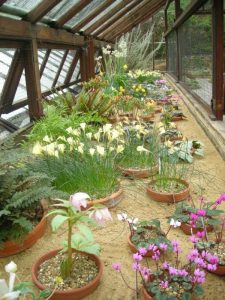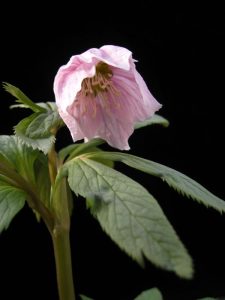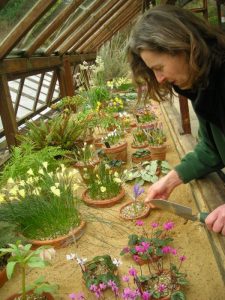This week has brought lengthening days, warmth from the sun and bud burst from many of the dormant clumps of herbaceous plants throughout the Garden – all signs that spring will soon be with us. It may take longer for the soil to warm up this year on account of the increased rainfall we in Edinburgh have experienced this January, a total of 167.1mm. This compares with the past 19 years’ average of 72.8mm. Sunshine levels have also been low which may be due in part to rain having fallen on 26 of the 31 days of January 2008.
This week the Alpine House is worth a visit. Of special mention is Helleborus thibetanus, a native to China originally discovered by Pere Armand David in 1869 in Sichuan Province but not introduced to cultivation until the 1980s.
A choice plant rarely seen in cultivation, it bears light pink petals in globose hung form on a stalk of 150mm. Within the head are a ring of fresh green nectaries. The leaves have red thread veins running from the leaf stalk into the divided leaflets. The watercolour-washed green surface of the leaf is imprinted with a textbook true network of veins. A saw tooth edge from the leaf tip running two thirds of the length completes the picture of a choice member of the family Ranunculaceae.
Also providing colour on the south side of the alpine house are representatives of the spring flowering bulbs and corms; Narcissus, Crocus, Cyclamen; Gymnospermum, Ranunculus, Corydalis and a promise of a good show from Primula allionii are also present, all pot grown and sunk into the raised benches of sand to maintain a cool root zone.



